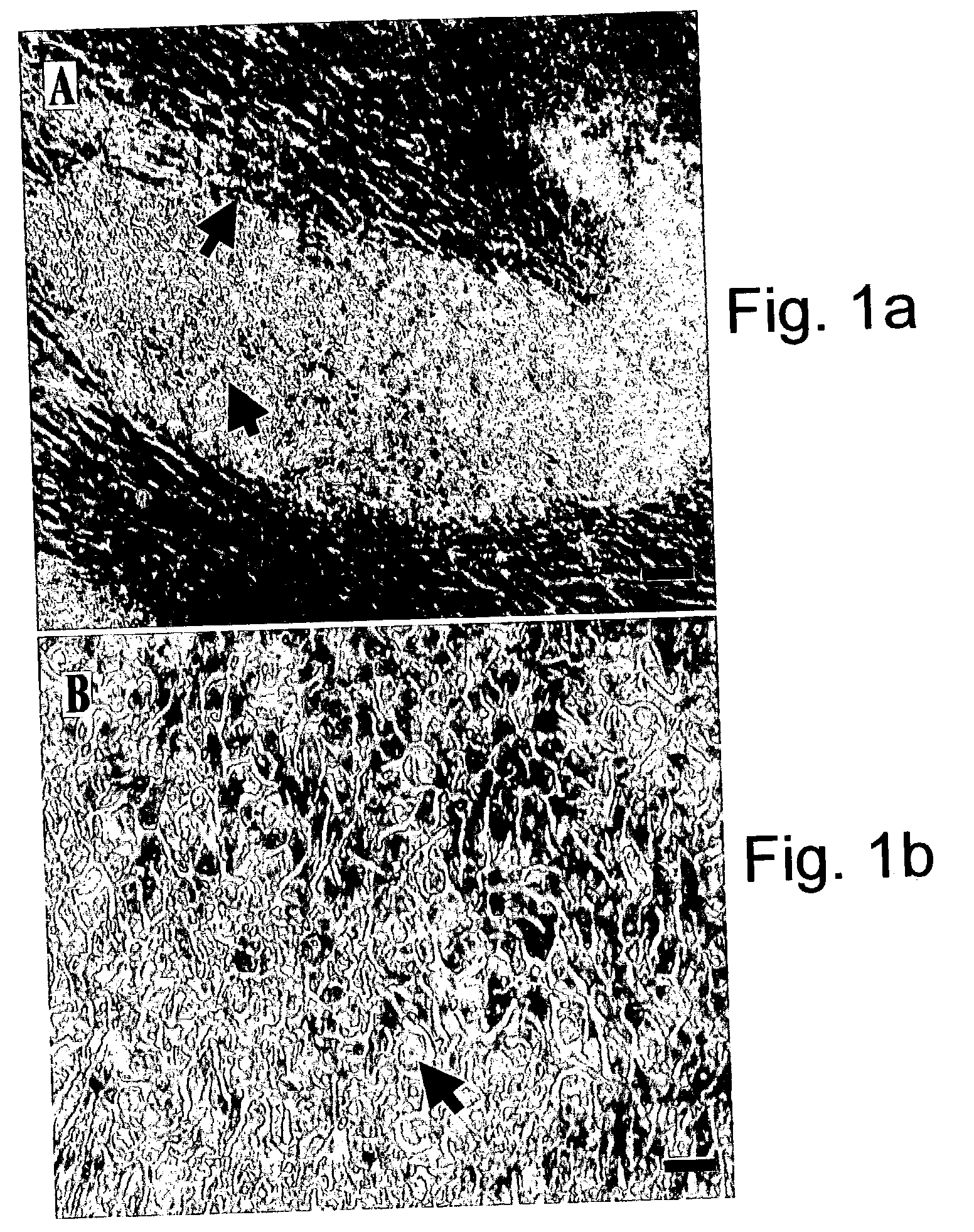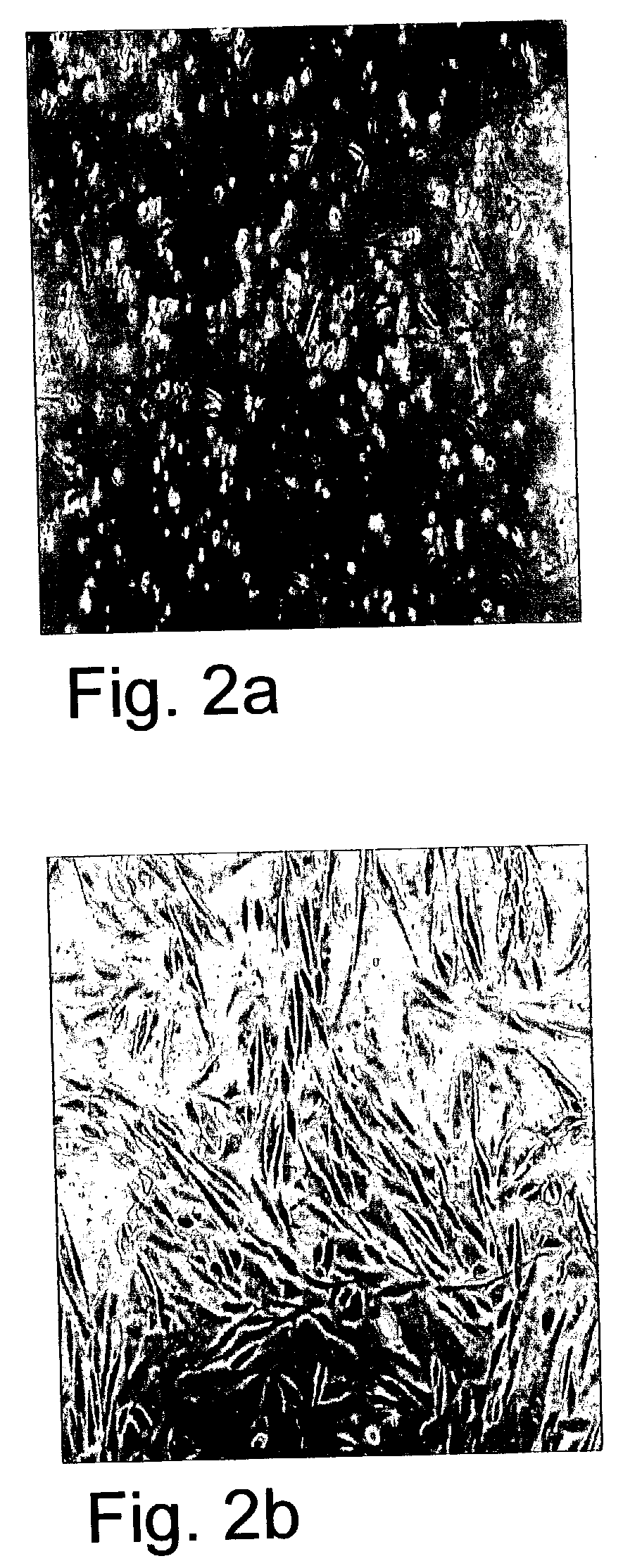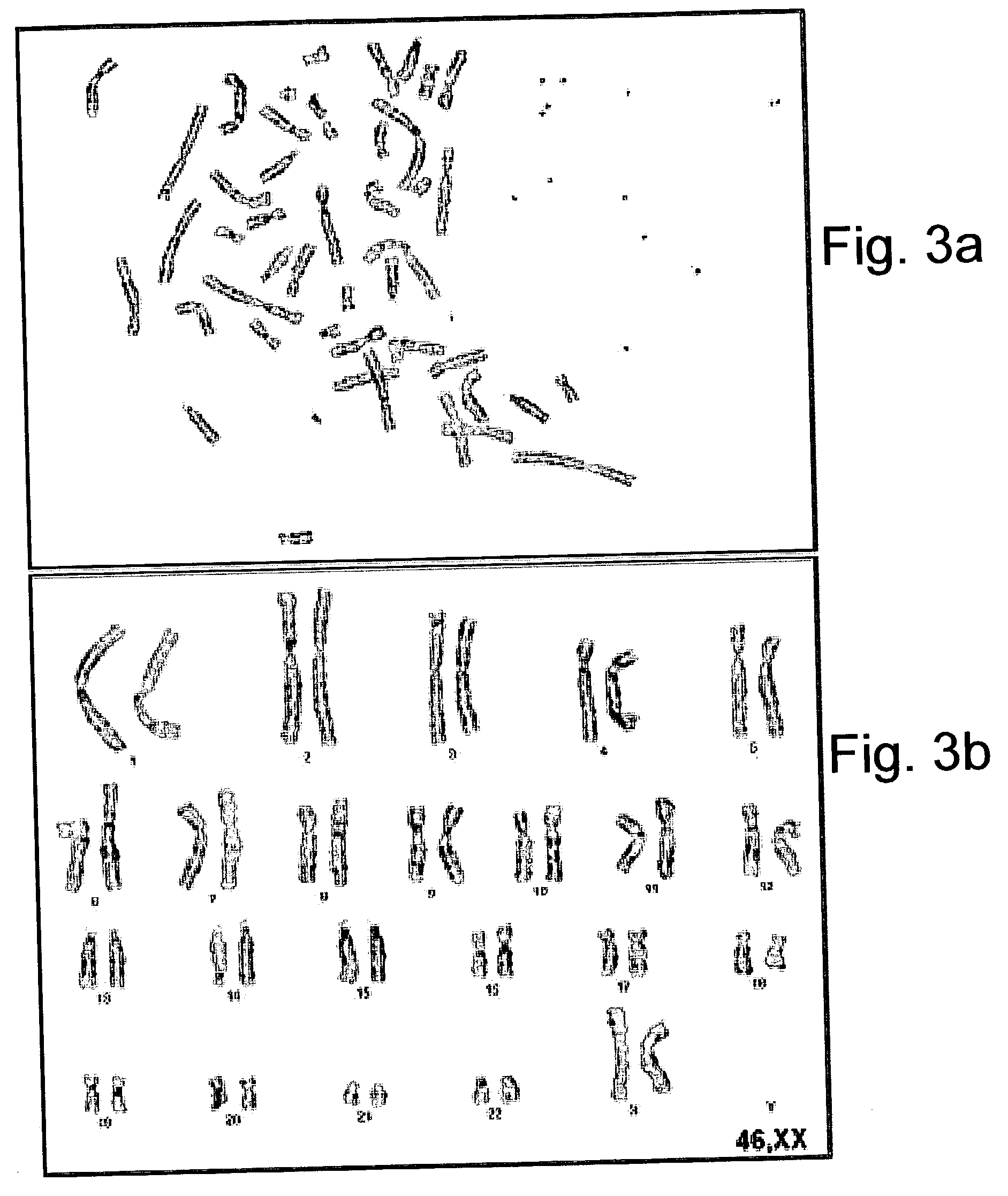Human foreskin cells suitable for culturing stem cells
a technology of stem cells and human skin, which is applied in the field of human skin cells suitable for culturing stem cells, can solve the problems of limiting the use of mouse es cells as a model of human development, preventing differentiation of human es cells, and substantially increasing the cost of production from the use of feeder cells
- Summary
- Abstract
- Description
- Claims
- Application Information
AI Technical Summary
Problems solved by technology
Method used
Image
Examples
example 1
[0122] Foreskin--Derived Cell Lines Suitable for Growing ES Cells
[0123] Materials and Experimental Methods
[0124] Establishment of foreskin feeder cell lines--Foreskin tissue was obtained by parental informed consent from 8 to 14 day old normal males. Tissue was washed in sterile PBS (Invitrogen, Grand island, N.Y., USA), minced via scissors and dissociated to single cells by incubation with Trypsin-EDTA (0.5% Trypsin, 5.3 mM EDTA, Invitrogen, Grand Island, N.Y., USA) for 20-40 min. Resulting single cell suspensions were grown in a culture medium including 80% Dulbecco's modified Eagle's medium (DMEM) containing high glucose concentration and no pyruvate (Invitrogen, Grand island, N.Y., USA), 2 mM L-glutamine, 0.1 mM .beta.-mercaptoethanol, and 1% non-essential amino acid stock (all purchased from Invitrogen, Grand island, N.Y., USA products). Foreskin medium was supplemented with serum or serum replacement as follows: Growth medium for foreskin cell lines F3, F7 and F8 was supplemen...
example 2
[0134] Foreskin-Derived Feeder Cell Lines Support Growth of Phenotypically Consistent ES Cells
[0135] Materials and Experimental Methods
[0136] Karyotype analysis--ES cells metaphases were blocked using colcemid (KaryoMax colcemid solution, Invitrogen, Grand island, N.Y., USA) and nuclear membranes were lysed in an hypotonic solution according to standard protocols (International System for Human Cytogenetic Nomenclature, ISCN). G-banding of chromosomes was performed according to manufacturer's instructions (Giemsa, Merck). Karyotypes of at least 50 cells per sample were analyzed and reported according to the ISCN.
[0137] Immunohistochemistry--Cells were fixed for 20 min in 4% paraformaldehyde, blocked for 15 min in 2% normal goat serum in PBS (Biological Industries, Beth Haemek, Israel) and incubated for overnight at 4.degree. C. with 1:50 dilutions of SSEA1, SSEA3, SSEA4, TRA-60, TRA-81 mouse anti-human antibodies, provided by Prof. P Andrews the University of Sheffield, England. Cel...
example 3
[0145] Foreskin-Derived Feeder Cells Support Growth of Functional ES Cells
[0146] Materials and Experimental Methods:
[0147] Formation of embryoid bodies (EBs) from human ES cells--Human ES cells grown on foreskin derived feeder layers were removed from the 6-well plate (60 cm.sup.2) co-culture by Type IV Collagenase (1 mg / ml) and were further dissociated into small clamps using 1000 .mu.l Gilson pipette tips. Thereafter, dissociated cells were cultured in 58 mm Petri dishes (Greiner, Germany) in a medium consisting of 80% Ko-DMEM, supplemented with 20% fetal bovine serum defined (FBSd, HyClone, Utah, USA), 1 mM L-glutamine, 0.1 mM .beta.-mercaptoethanol, and 1% non-essential amino acid stock. Unless otherwise noted all were purchased from Gibco Invitrogen corporation, USA. Formation of EBs was examined following one month in suspension.
[0148] Reverse transcriptase (RT) coupled PCR--Total RNA was isolated from either undifferentiated human ES cells or from one-month-old EBs using Tri-...
PUM
 Login to View More
Login to View More Abstract
Description
Claims
Application Information
 Login to View More
Login to View More - R&D
- Intellectual Property
- Life Sciences
- Materials
- Tech Scout
- Unparalleled Data Quality
- Higher Quality Content
- 60% Fewer Hallucinations
Browse by: Latest US Patents, China's latest patents, Technical Efficacy Thesaurus, Application Domain, Technology Topic, Popular Technical Reports.
© 2025 PatSnap. All rights reserved.Legal|Privacy policy|Modern Slavery Act Transparency Statement|Sitemap|About US| Contact US: help@patsnap.com



